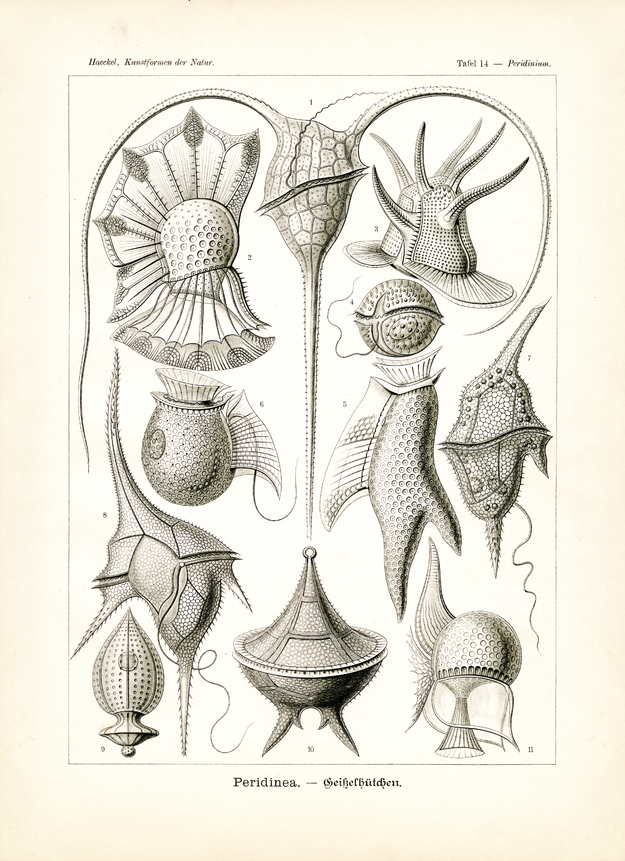Translation of the original German introduction by Ernst Haeckel:
Division of Protophyta (Urpflanzen); - class of Algetta; - subclass of Mastigota (Geißelpflänzchen); - order of Peridinea or Dinoflagellata (Geißelhütchen).
Peridinia or Geißelhütchen are mono-cellular Protophyta, characterized by the formation of a two-flapped, most peculiarly and diversely shaped shell. The cell cover consists of cellulose, in some way similar to Diatomea (tab. 4), composed of discs and equipped with very fine pores. Peridinea are very small (in most cases microscopically), but live in immense masses hovering in plankton at the surface of the ocean (some in freshwater). They move swimming with the help of two fine flagella that emanate from a horizontal lateral groove of the cell body, in between the two shell flaps (fig. 1, 4, 6, 7, 8); therefore these Algetta (or “mono-cellular algae”) have earlier been understood as Infusoria. The longer flagellum swings in long waves like a whip, mostly moving in a backward direction. The shorter flagellum is found at the equatorial lateral groove or ‘belt-groove’; it swings in numerous short waves. In the interior of the cell are found, besides a roundish nucleus, numerous yellow, green or brown ‘colour grains’ (Chromatella). Both flaps of the cellulose cover are most often of very diverse form and size. The upper or ‘crest-flap’ (Akral-half) is usually smaller than the lower or ‘food-flap’ (Basal-half). Both are often covered with prickles and wing-shaped extensions that serve as protective arms or hovering apparatuses.
Translation by VR Translators Bangalore
We've scanned the original lithography at 1200dpi on the Epson A3 scanner of A3 scanner huren. You can download a 400dpi JPEG here.
